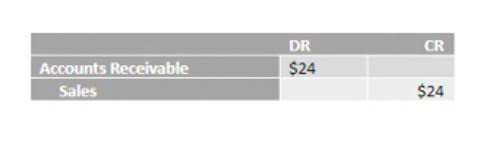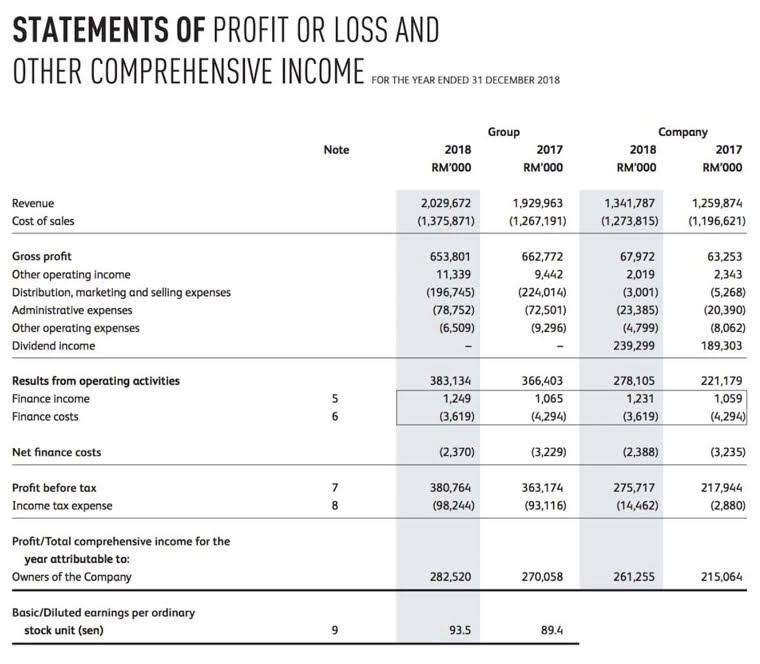Hello world!
Welcome to WordPress. This is your first post. Edit or delete it, then start writing!
Welcome to WordPress. This is your first post. Edit or delete it, then start writing!
Loan term in years – most fixed-rate home loans across the United States are scheduled to amortize over 30 years. Some foreign countries like Canada or the United Kingdom have loans which amortize over 25, 35 or even 40 years. As an extra precaution, we wrap this and all subsequent formulas in the IFERROR function. This will prevent a bunch of various errors if some of the input cells are empty or contain invalid values. To view the summary information about your loan at a glance, add a couple more formulas at the top of your amortization schedule. Because a loan is paid out of your bank account, Excel functions return the payment, interest and principal as negative numbers.
For example, if you’re purchasing a house or car, increasing your down payment can mean you end up with a smaller mortgage or car loan. Alternatively, you can look for homes or cars with lower prices to get a loan that better aligns with your budget. To create a loan schedule, we will use the different formulas discussed above and expand them over the number of periods. We find the arguments, rate, length, principal, and term (which are mandatory) that we already saw in the first part with the formula PMT.
Microsoft Office 365 allows you to take your Excel spreadsheet to the cloud. That way, you can access your amortization table from anywhere you have a device and an Internet connection. AI tools can assist you in quickly identifying errors or suggesting formula improvements. If you’re using a tool like Excel’s integrated AI features, you might already see some options popping up as you type.
An amortizing loan is repaid via periodic installments over the lifetime of the loan. Each periodic payment includes both a principal portion and an interest portion. For example, a fully amortizing loan for 24 months will have 24 equal monthly payments. Each payment applies some amount towards principal and some towards interest. To detail each payment on a loan, you can build a loan amortization schedule.
The calculator updates results automatically when you change any input. An amortizing loan is just a fancy way to define a loan that is paid back in installments throughout the entire term of the loan. The result is shown in the screenshot above, “Loan Decomposition” over the period analyzed, which is “one;” that is, the first period or the first month. We pay $1,161.88 broken down into $856.20 principal and $305.68 interest. Using Excel is a great way to keep track of what you owe and to come up with a schedule for repayment that minimizes any fees you might end up owing.
Our first step is to convert the annual interest rate into a monthly interest rate by dividing it by 12, which leaves us with a monthly interest rate of 0.42%. To make this more dynamic, we will create a dynamic header using the ampersand (“&”) symbol in Excel. We can then change the loan term and the header will update automatically, as shown below. Of course, many amortizing term loans are longer than one year, so we can further enhance our worksheet by adding more periods and hiding those periods that are not in use. As mentioned earlier, each payment consists of an interest portion and a principal portion.
While Excel may be specifically designed for data entry and financial analysis, its capabilities extend far beyond that. The versatile platform can also be used to design custom schedules tailored to the specific needs of your business.
The interest portion of an amortizing term loan is higher at the beginning of repayment schedule in excel the loan than at the end. This is because the loan’s principal is reduced over the life of the loan, resulting in lower interest expense as the loan reaches maturity. If your amortization table begins in a different row, please be sure to adjust the cell references accordingly.
Fortunately, you can duplicate Excel templates to create multiple amortization schedules with just a few mouse clicks. Save them with different names — such as “mortgage amortization table” — and you’re good to go. For instance, you can make your payments in the amortization schedule colored red.
Bricks makes it easy to create docs, reports, presentations, charts, and visuals backed by your data. These advanced techniques can provide valuable insights into your financial situation, helping you make more strategic decisions about your loan management. The formula of each Excel function used in each column is as follows. Explore conventional mortgages, FHA loans, USDA loans, and VA loans to find out which option is right for you. Then save the newly created workbook as an Excel template and reuse whenever you want. If you prefer to have all the results as positive numbers, put a minus sign before the PMT, IPMT and PPMT functions.
This function helps determine the periodic payment for a loan based on constant payments and a constant interest rate. In this Excel loan payment schedule template, enter your loan information at the top of the worksheet, in the green cells. This video shows a quick overview of the payment schedule template, and how it works.
In each row, it’s the original loan amount, minus the total principal amounts in the rows above. Now, let’s calculate the amount of the payment applied to the principal each period with the PPMT (principal payment) function. Now that we understand how the SEQUENCE and SCAN functions work, we can move on to creating a dynamic amortization schedule. The first argument of SEQUENCE defines the number of rows, which in this case is the number of values we’d like it to return. It has additional arguments that can be helpful in other situations, so definitely check them out. Since the borrowing term is denoted in years, we’ll also adjust that input to be expressed on a monthly basis by multiplying it by twelve.
Monthly Payment = (P × r) ∕ n
Again, “P” represents your principal amount, and “r” is your APR. However, “n” in this equation is the number of payments you'll make over a year. Now for an example. Let's say you get an interest-only personal loan for $10,000 with an APR of 3.5% and a 60-month repayment term.
Please pay attention that we put a minus sign before the PMT function to have the result as a positive number. To prevent errors in case some of the input cells are empty, we enclose the PMT formula within the IFERROR function. In the Period column, insert the maximum number of payments you are going to allow for any loan, say, from 1 to 360.
If your payments are too high, an income-based repayment plan can give you a reprieve. However, it can also mean you end up owing more in the long run if your payments aren’t enough to cover the interest due on the loan. If you already have a loan, there are several ways to reduce the monthly payment. When you refinance, you take out a new loan and use the principal from the new loan to pay off the current one.
The PMT function in Excel, which stands for payment, allows you to see what amount you might pay on a loan based on different factors, such as the principal loan amount and how quickly you plan to pay it back.
Sage 100 Contractor includes construction-specific features like project management tools, a report writer wizard, and equipment management. Its estimating and budgeting functionalities help manage budgets and completion of bids, while the scheduling tool automates subcontractor and supplier notices. Ultimately, it’s a comprehensive system that contractors can install on many different configurations, including stand-alone, network servers, and workstations.
Revenue recognition and retainage practices track with long-term contracts paid over time. To be eligible, contractors can’t exceed a certain average annual revenue, and their contracts must be able to be completed within a set timeframe. However, contractors now must consider guidance from the ASC 606 revenue recognition standards with their construction CPA. In the end, the goal is to help contractors identify their true costs and profitability, which is otherwise very difficult to do in an industry with so many variables from contract-to-contract. Construction contractors, however, need to treat each construction project as a unique, short-term profit center because each construction project tends to have unique inputs and requirements. Contractors usually have a high overhead that changes frequently, and it is challenging to ensure that all items are included and up to date.
It’s important to note that, while Procore does offer financial management tools and reporting, it’s more of a project management solution than a true accounting software. Depending on your needs, Procore may be all you need to keep your finances organized and trackable. It’s a well-known tool that does the job well, provided you have the budget to pay for their service. Specialized accounting software is available to help construction contractors manage their business finances and the various projects that they may be involved in. Most of these solutions include accounting features to support your business from the bidding process to invoicing. Forbes Advisor researched the best construction accounting software on the market to help you find the right solution for your business.
By subscribing you agree to with our Privacy construction bookkeeping Policy and provide consent to receive updates from our company. Construction companies often face complex tax regulations, especially when operating across multiple jurisdictions. Failing to comply with these requirements can result in audits and penalties.
These tools streamline expense tracking, integrate with accounting systems, and provide real-time insights into project costs. Contractors record revenue when and only when they receive payment — and report expenses when and only when they actually pay. Under cash accounting, if money hasn’t changed hands yet, there are no financial transactions to account for. Construction accounting is a unique form of bookkeeping and financial management.
It can be deployed as an on-premise program or as cloud software through private hosting. For an additional fee, JOBPOWER can host your software in the cloud, allowing you to access your files from anywhere. JOBPOWER offers an ERP solution with an integrated GPS location tracker and a map. The GPS tracker helps field supervisors and managers track the location of their employees, especially if they’re working in the field. Another drawback is that you can only track estimated vs actual project costs in the most expensive QuickBooks Online plan. If you are on a budget and comparing actual to estimated costs is important to you, consider QuickBooks Enterprise.
Sage Intacct Construction and Sage Intacct Real Estate is designed for contractors and owners to be able to manage properties and projects effectively. When it comes to https://www.bignewsnetwork.com/news/274923587/how-to-use-construction-bookkeeping-practices-to-achieve-business-growth real estate management, the platform takes static information, such as lease contracts, and transforms them into dynamic information resources. This improves communication, opens up lease opportunities and can accommodate most real estate situations. See if you’re on track with the report designer that allows you to customize construction reports and financial statements. Conduct an audit of a project that will build a report easy for your certified public accountant (CPA) to digest and work from.

Learn more about the benefits of claiming depreciation and depreciation examples with frequently asked questions about depreciation. Inverse year number is the first year of expected life, starting from the greatest digit, divided by the total years. In year 1 this would be (5 / 15), in year 2 it would be (4 / 15), and so on. A financial professional will offer guidance based on the information provided and offer a no-obligation call to better understand your situation. Our mission is to empower readers with the most factual and reliable financial information possible to help them make informed decisions for their individual needs. For information pertaining to the registration status of 11 Financial, please contact the state securities regulators for those states in which 11 Financial maintains a registration filing.

Determining salvage value accurately is an important step, though, because the expected salvage value of an asset is deducted from the initial cost of the asset to arrive at an item’s depreciable cost. The depreciable cost of an asset is its actual cost minus any salvage value. Some assets, if no longer needed, can be sold at the end of their depreciable life spans. If an asset is marketable at the end of its lifespan, its expected selling price is called its salvage value, or residual value. It is a tax accounting method by which an asset’s cost is allocated over the duration of its useful life using one of several generally accepted depreciation formulas. If the cost price is spread over 4 years this would result in a 25% depreciation p.a.
Also, depreciation is the systematic allocation of the depreciable assets cost of noncurrent, nonmonetary, tangible assets (except for land) over their estimated useful life. This method provides predictability for both owners and tax auditors and consistency across different types of assets. Calculating useful life is a critical aspect of fixed asset management, and it involves a systematic approach to determine the anticipated duration an asset is expected to provide value to a business. The process begins by considering factors such as wear and tear, technological advancements, and industry standards. A Fixed Asset Useful Life Table serves as a valuable tool in this calculation, providing a structured framework to analyze and document the estimated useful life of each asset category. It involves a comprehensive assessment of historical data, expert opinions, and industry benchmarks to arrive at an informed estimate.

It is paired with and offset by the accumulated depreciation line item, resulting in a net fixed assets amount. Fixed assets are considered to be long-term assets, so the presentation is after all current assets on the balance sheet (typically following the inventory line item). An example of this presentation appears in the following exhibit, which shows the fixed assets section of a balance sheet.
Salvage value is the amount you expect to be able to obtain for the asset at the end of its usable life. Depreciation ends when the asset reaches the end of its usable life or when you sell it. In some cases, an asset may decline in value at a steady rate, while others may decline more rapidly in years where what are retained earnings they see heavier use. Our goal is to deliver the most understandable and comprehensive explanations of financial topics using simple writing complemented by helpful graphics and animation videos. At Finance Strategists, we partner with financial experts to ensure the accuracy of our financial content.

The SYD method allocates larger portions of the property’s cost to earlier periods in its lifespan, resulting in higher deductions at the beginning and lower deductions in later periods. It is a method of depreciation that calculates the value of an asset based on its usage. This method is best for assets commonly used or consumed over time, such as vehicles, mining equipment, and manufacturing machinery. It allocates the cost of acquiring and using an asset in terms of units produced instead of time. Additionally, understanding depreciation can help businesses accurately calculate their taxable income each year.

An asset depreciates until it reaches the end of its full useful life and then remains on the balance sheet for an additional year at its salvage value. Examples of the classifications of assets used to record depreciable assets are buildings, computers and software, furniture and fixtures, machinery, and vehicles. The double-declining balance (DDB) method is an even more accelerated depreciation method. It doubles the (1 / Useful Life) multiplier, which makes it twice as fast as the declining balance method. Sum-of-years-digits is another accelerated depreciation method that gives greater annual depreciation in an asset’s early years. Depreciable business assets are assets that have a lifespan and can be considered a business expense.
When the asset is no longer useful to the company, it may sell it off at a lower price than it was initially worth. Discover the key strategies for optimizing your company’s assets with our guide on fixed asset policy best practices. In accounting, cash is considered a depreciable asset because its future worth is reduced because of inflation. However, a business cannot depreciate an asset that it does not effectively own.
However, it is treated as an expense in accounting records for tax-related purposes. To calculate depreciation on real estate, you first have to know the cost basis. The cost basis is the value of the property minus the value of the land that Bookkeeping for Veterinarians it is built on plus any allowable closing costs.